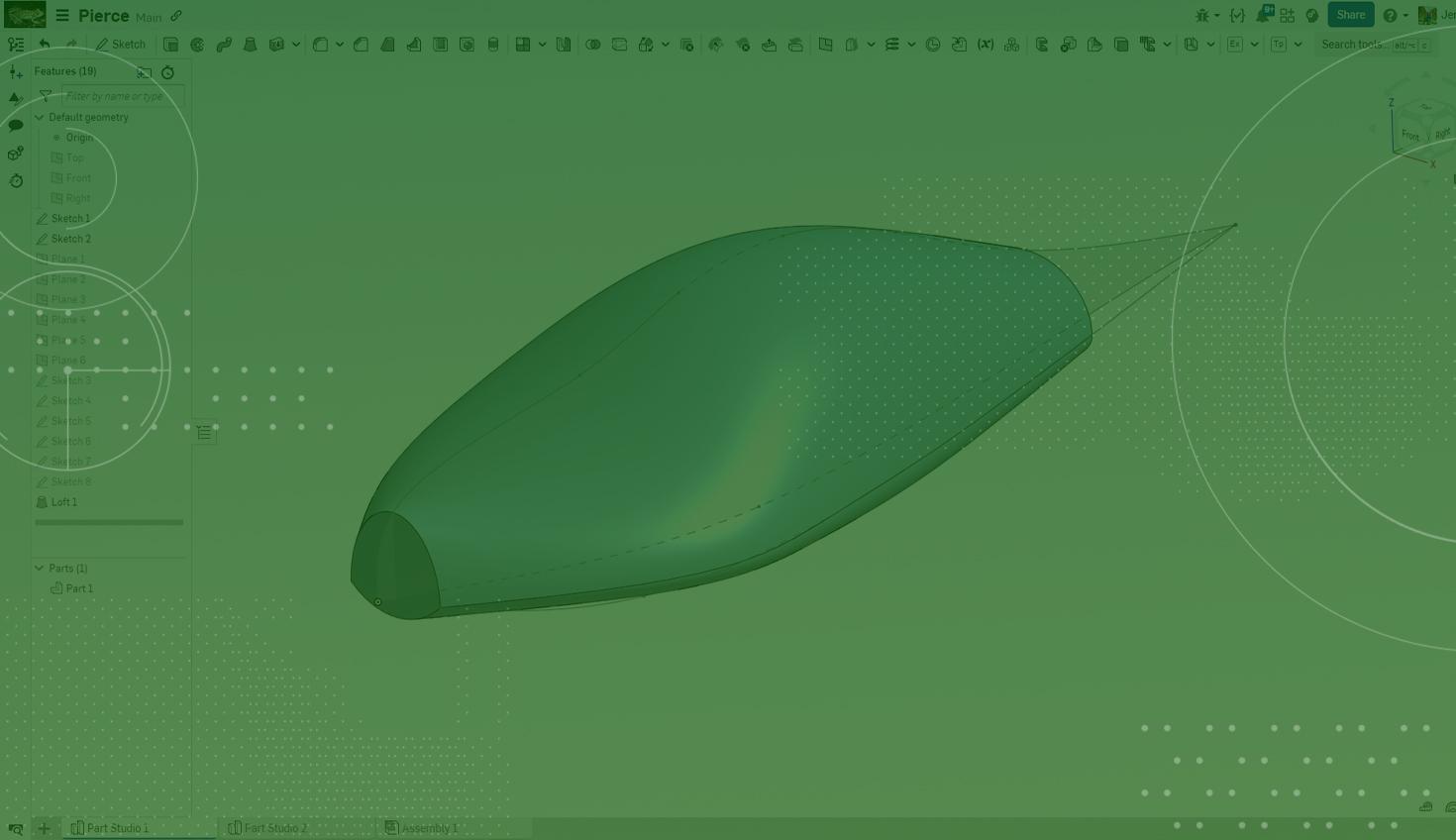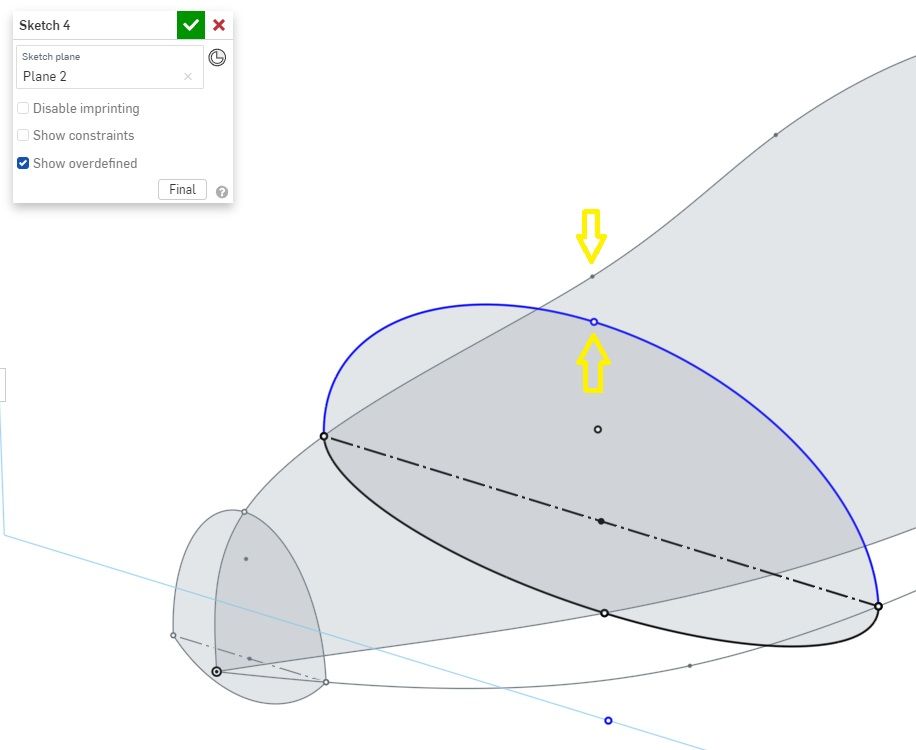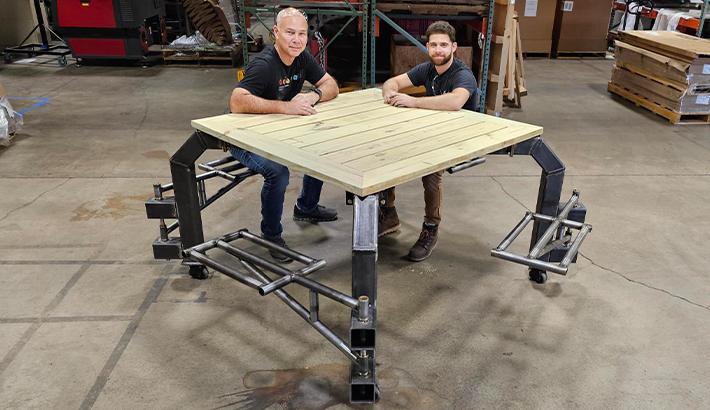
1:09
Often, users should or could use the Pierce relation in Onshape to define relationships between entities in a sketch instead of using a Coincident relation. The objects could be in the same sketch, in different sketches, or between a sketched object and an existing edge of the part.
Pierce Between Sketched Items
When defining relations between sketches, users are sometimes confused about the difference between a Pierce and a Coincident relation.
In the example below, when trying to align two curves that exist in separate sketches, the Coincident relation only places a vertical constraint between the points.

To ensure that the point in the second sketch follows the curve from the first sketch, you need to use a Pierce relation. This fully defines the sketch point, as shown below:
This also allows you to use the first sketch as a guide curve between the profiles when creating a Loft between the profiles:
Also, use Pierce to position a profile for a sweep:
Pierce Between Sketches and Part Edges
Additionally, use the Pierce relation to position a sketch profile along an edge. By choosing Pierce instead of Coincident, the sketch is fully defined with only one constraint.
Are you interested in learning more about Onshape Tech Tips? You can review the most recent technical blogs here. Check out this Tech Tip on the Loft feature for more sketching advice.
The Onshape Learning Center
Take self-paced courses, get technical briefings, or sign up for an instructor-led training session.
Latest Content

- Blog
- Collaboration
- Education
- Enterprise
- Customers & Case Studies
From Concept to Real-Life Impact: Building a First-of-Its-Kind Inclusive Picnic Table
01.09.2026 learn more

- Blog
- News from Onshape @ PTC
Onshape at CES 2026: Where Innovation Meets the Show Floor
01.05.2026 learn more



